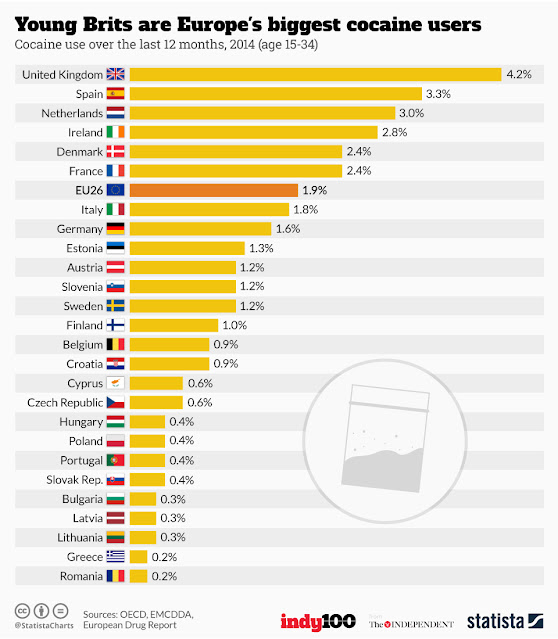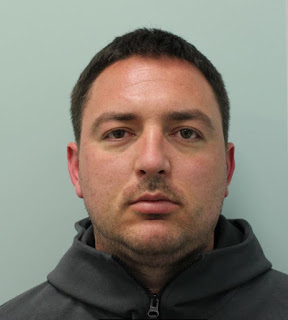All About The Illegal Drug Trade Statistics
The use of drugs in the UK is a serious issue. The number of drug-related deaths has increased by 10% over the last decade, with the majority occurring among those under 50. Furthermore, there has also been a recent increase in drug use among young people aged 16-24 years old.
What makes these statistics even more disturbing is that most of these deaths are due to accidental overdoses and not intentional suicides. This shows how drugs are becoming more accessible and popular than ever before.
In 2016, there were just over 10,000 drug offences in England and Wales. This was a decrease from the last decade’s high of nearly 12,000 offences in 2007. Similarly, the number of drug offenders that went to prison fell from 1,415 in 2007 to just 646 in 2016 - a reduction of more than half. The number found guilty but discharged without sentence also fell by about 50%.
The Street Price Of A Gram Of Cocaine
According to a recent report from the United Nations Office on Drugs and Crime, 275 million people used illegal drugs last year while over 36 million suffered from drug use disorders. Worryingly, cocaine supply chains to Europe are now diversifying which is driving prices down and pushing quality up, potentially increasing the level of harm caused by use of the drug in the region.
Cocaine's global footprint quickly becomes apparent from its huge number of nicknames - blow, bump, blanca, C, Big C, coke, dust, flake, icing, line, nose candy, pearl, rail, snow, sneeze, sleigh ride, snow white, sniff, speedball, toot and white rock to name just a few. UNODC states that there were 20 million cocaine users across the world in 2019 and that the global quantity of the drug seized reached a record high of 1,436 tons, 9.6 percent higher than in 2018.
The UNODC report also contains some interesting data about cocaine pricing in Europe and the United States. It states that the United Kingdom had some of the highest cocaine retail street prices worldwide in 2019 at $127 per gram while the United States wasn't far behind at $120. A gram of cocaine can be found for half that price in some parts of Europe such as in Germany and Belgium where UNODC states it has a retail street price of $60 and $57 per gram, respectively. (source)
The street price of cocaine in the UK is significantly higher than some other countries, such as the Netherlands. The high price of cocaine in the UK is due to three main factors; firstly, it is imported from abroad and is therefore more expensive because of the transportation costs involved. Secondly, it has a higher purity level than cocaine sold elsewhere which makes it easier to cut and therefore more valuable. Thirdly, there are only two entry points into Great Britain which reduces competition for supply which again boosts prices.
The most recent data from 2015 shows that 34% of all drugs seizures were for cocaine in Great Britain while 12% were for cannabis. There was also a noticeable increase in heroin seizures over this period (from 11% to 15%), probably linked with a rise in heroin use across Europe. It could be also the case that it is more expensive in the UK because the police have started to make bigger drug busts.
The Biggest Drug Users In Europe
In 2015, 1.3 million Europeans were using illicit drugs on a daily basis. That’s a three-fold increase from the 0.4% of Europeans who used illicit drugs on a daily basis back in 1995.
Wastewater with the Most Cocaine
Half eaten kebabs, a broken high heel, a puddle of sick in a shop doorway - typical remnants of a Saturday night out in the city. The European Monitoring Centre for Drugs and Drug Addiction (EMCDDA) though, measure a much less visible indicator of a city's partying habits. Every year, they analyse waste water samples around the continent for traces of illicit drugs such as cocaine and MDMA.
Looking at traces of cocaine found at the weekend, renowned party town Amsterdam is at the top of the scale with 1,028mg of the drug per one thousand people flowing through the drains. In second is Swiss banking hub Zurich with 976mg and rounding off the top three is the Danish capital, Copenhagen, with 780mg. (source)
London has a massive cocaine addiction
A newly released analysis of waste water in European cities by King's College London has revealed the massive and unmatched scale of London's cocaine addiction. According to the research, as estimated 23 kilograms of the illicit drug is consumed in the UK capital - more than Barcelona, Amsterdam and Berlin combined. Reporting by Sky News indicates that this level of usage equates to 567,445 doses every day and an estimated street value of £2.75m.
Unlike other cities included in the research, Dr Leon Barron, forensic scientist at King's College London, said that "sustained cocaine usage across the week" was observed in London, with only "a slight rise at the weekend", adding: "cocaine is an everyday drug in London". (source)
How Drug Habits Differ in the U.S. and the UK
Pricy cocaine is a very sought-after drug in the United Kingdom according to how much of it was seized in the country last year. 30 percent of the total weight of drugs confiscated while or after being smuggled into the country was cocaine in the fiscal year of 2018/19. In the U.S., amphetamines (methamphetamines in this case) took up a much bigger share of drugs confiscated by Customs and Border Protection, even though large amounts of the drug are also produced within the country. 11 percent of the total weight of confiscated drugs in the U.S. was meth, while 13 percent was cocaine.
In the UK on the other hand, meth use hasn’t quite caught on, as only 2 percent of drugs seized were amphetamines. In the UK statistics, meth is not listed as a separate entity as the statistic mentions only amphetamines in general. According to drug use statistics in the country, the larger part of those amphetamines would likely be party drugs like speed, making meth use even more scarce.
Cannabis was the most common drug to be seized in both countries, making up 74 percent of drugs confiscated in the U.S. and 65 percent of those confiscated in the UK. (source)








Comments
Post a Comment